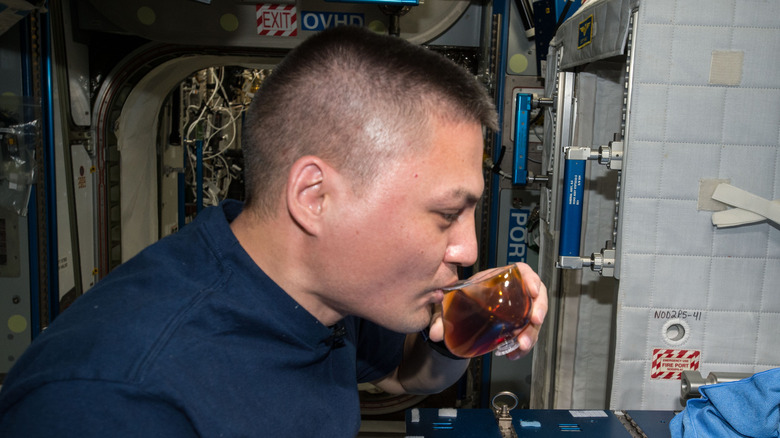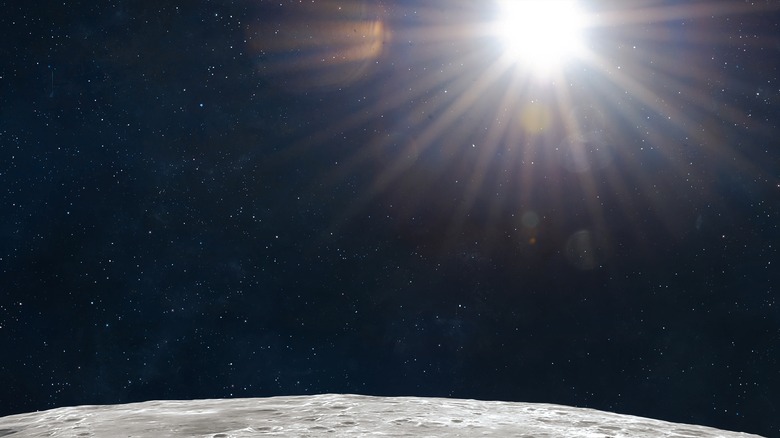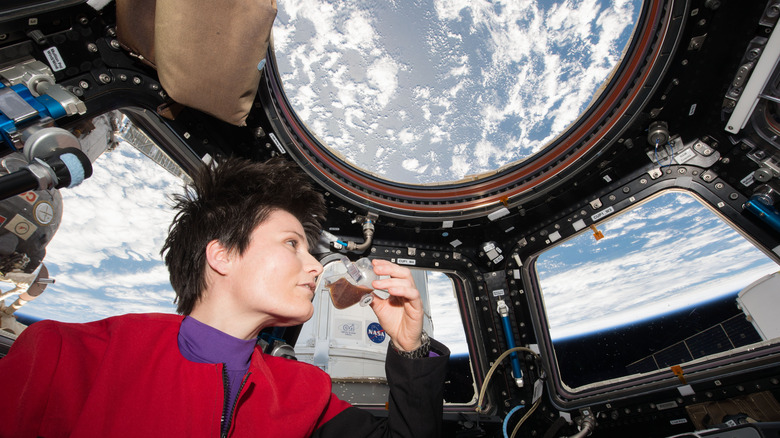NASA Astronauts Have A Special Space Cup For Drinking In Zero Gravity
Ever thought about how astronauts take a drink in space? If you're curious about this topic, you've probably seen demonstrations like the one by Canadian astronaut David Saint-Jacques, who showed how liquids, instead of dripping as they do on Earth, suspend and float in a liquid "cloud" in zero gravity. Astronauts can stick a straw into this cloud and suck up the liquid, or even drink it directly from the air — no hands needed!
Unfortunately, NASA considers doing that a safety risk, and understandably so. Stray water droplets floating around could potentially damage crucial electronics. As a result, astronauts have traditionally relied on plastic bags with suction straws to consume their beverages — a functional but hardly enjoyable solution.
Yet, the official X (formerly known as Twitter) account for the research wing of the International Space Station (ISS) once shared a video of the astronaut Nicole Mann drinking a cappuccino from a peculiarly-shaped cup in space. That cup — called a capillary cup — is an experimental "space cup" designed specifically for use in zero gravity, so astronauts can drink freely from an open container just like they would on Earth, without fear of spilling. The science behind this ingenious cup is precisely what you'd expect from the brilliant minds at NASA.
How the capillary cup works
So, how does this space cup work its magic? The secret, according to the cup's patent, lies in a cleverly designed channel that runs along the cup's interior wall, from the bottom to the rim. This channel, formed by an acute angle, harnesses the power of capillary action — the same phenomenon that allows trees to draw water upwards from their roots — to give the user a semi-natural drinking experience even when gravity is absent.
When a liquid is poured into the cup, capillary forces cause it to creep along the channel, bringing it in close proximity to the drinker's lips at the rim. The bulk of the liquid remains at the bottom, held in place by these same capillary forces. As the astronaut tilts the cup and sips from the rim, the liquid in the channel is replenished from the reservoir below, ensuring a continuous flow until the cup is empty.
It also makes coffee tastier!
The next time you drink coffee, try to hold your breath when you take a sip. Without taking in that wonderful scent of a fresh brew, the coffee — no matter how well it's brewed — simply doesn't taste right. This is because our sense of smell plays a crucial role in how we experience food and drinks. Without it, per the Dana Foundation, we become numb to the subtle nuances in the flavor profile of whatever we're eating or drinking, except for the five basic taste elements (sweet, salty, sour, bitter, and savory). As any enthusiast will tell you, the nuances are where it counts the most when tasting good coffee.
Well, as terrible as it sounds to us Earth-dwellers, astronauts have to taste all their drinks this way the whole time they're in space (in fact, astronauts have always had some pretty weird food throughout history). Remember, the only way they can drink something is from a sealed plastic bag with a straw. So, while they do have freeze-dried, aka instant coffee in space, the drinking experience is, as NASA would call it, "off-nominal."
Fortunately, that's where the capillary cup can help. Because it has an open design, astronauts are free to take in the smell to their heart's desire and get a better-tasting cup of extraterrestrial joe as a result. For astronauts spending months at a time in the confines of the space station, such a small pleasure can make a world of difference.


